A straight wire lies along a body diagonal of an imaginary cube of side and carries a current of 5 A (as shown in Fig. 1.61). Find the force on it due to a uniform field

In order to use equation , we would need to find the
angle between . We avoid this task by using unit vector
notation. Form the problem figure, we see that
Thus, the force is
The force lies in the xz plane and has a magnitude
Topper's Solved these Questions
- MAGNETIC FIELD AND MAGNETIC FORCESBOOK - CENGAGE PHYSICS ENGLISHCHAPTER - MAGNETIC FIELD AND MAGNETIC FORCESEXERCISE - Exercise1.3
14 Videos
- MAGNETIC FIELD AND MAGNETIC FORCESBOOK - CENGAGE PHYSICS ENGLISHCHAPTER - MAGNETIC FIELD AND MAGNETIC FORCESEXERCISE - Exercises Subjective
10 Videos
- MAGNETIC FIELD AND MAGNETIC FORCESBOOK - CENGAGE PHYSICS ENGLISHCHAPTER - MAGNETIC FIELD AND MAGNETIC FORCESEXERCISE - Exercise 1.1
22 Videos
- INDUCTANCEBOOK - CENGAGE PHYSICS ENGLISHCHAPTER - INDUCTANCEEXERCISE - Concept Based
8 Videos
- MISCELLANEOUS VOLUME 3BOOK - CENGAGE PHYSICS ENGLISHCHAPTER - MISCELLANEOUS VOLUME 3EXERCISE - True and False
3 Videos
Similar Questions
The square loop in Fig. has sides of length 20 cm. It has 5 turns and carries a current of 2 A. The normal to the loop is at 37∘ to a uniform field →B=0.5ˆjT.
a. Find the magnetic moment of the loop.
b. Find the work needed to rotate the loop from its position of minimum energy to the given orientation.
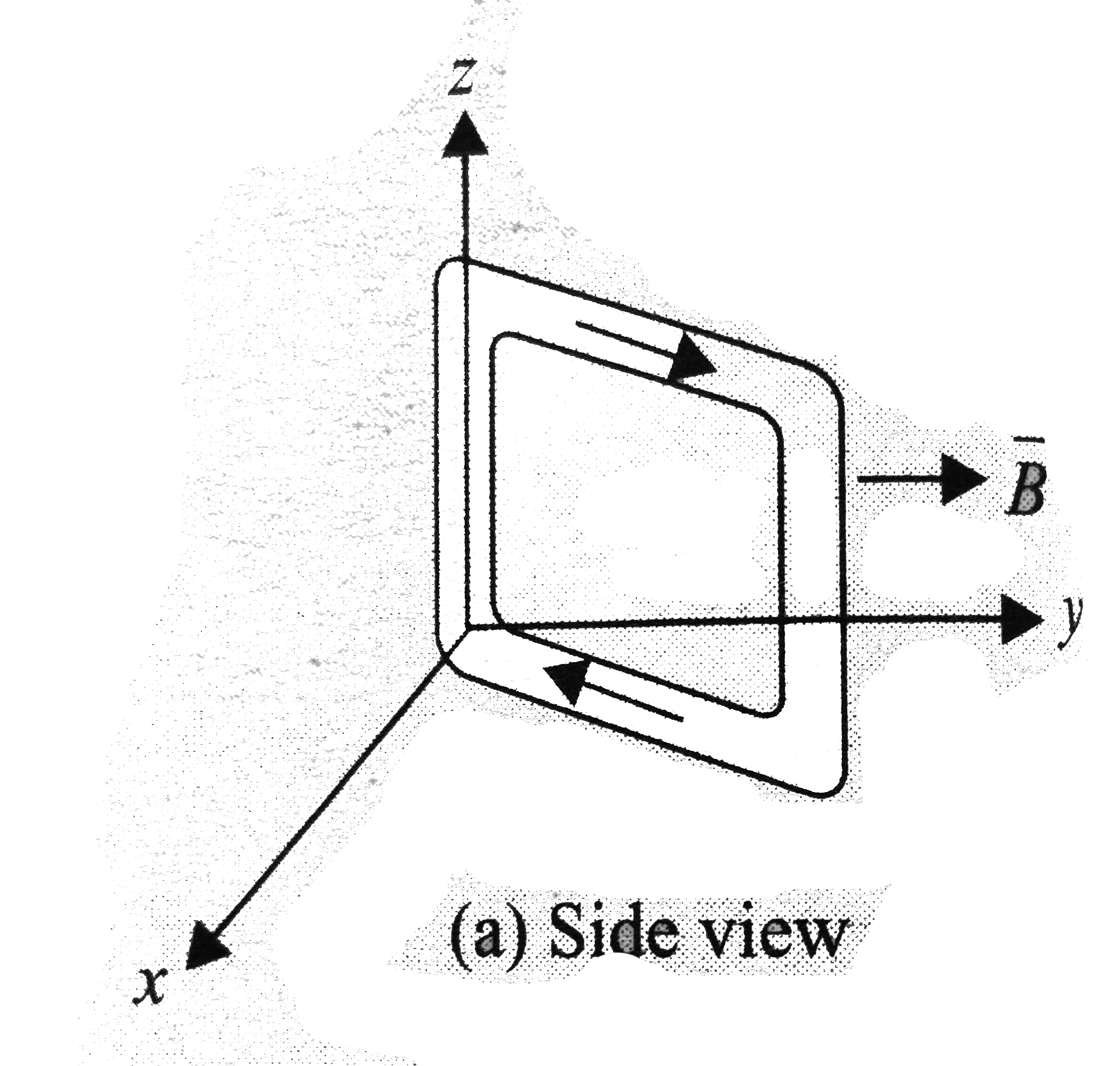
View SolutionA copper wire of diameter 1.6 mm carries a current of 20A. Find the maximum magnitude of the magnetic field (vec B)due to this current.
View Solution
Knowledge Check
A uniform magnetic field of 1000 G is established along the positive z-direction. A rectangular loop of sides 10 cm and 5 cm carries a current of 12 A. What is the torque on the loop as shown in the figure?
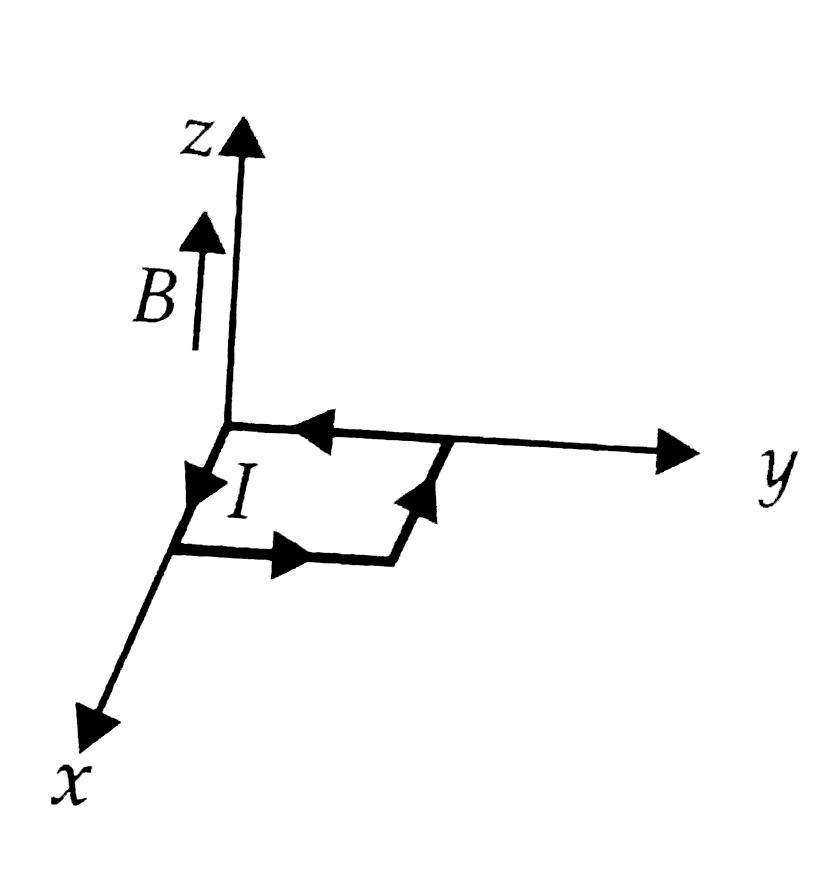 AZeroB1.8×10−2NmC1.8×10−3NmD1.8×10−4Nm
AZeroB1.8×10−2NmC1.8×10−3NmD1.8×10−4NmThe magnetic force per unit length on a wire carrying a current of 10 A and making an angle of 45∘ with the direction of a uniform magnetic field of 0.20 T is
A2√2Nm−1B2√2Nm−1C√22Nm−1D4√2Nm−1
A copper wire of diameter 1.6 mm carries a current of 20A. Find the maximum magnitude of the magnetic field (→B) due to this current.
View SolutionCalculate the force on a current carrying wire in a uniform magnetic field as shown in Fig. 1.59.
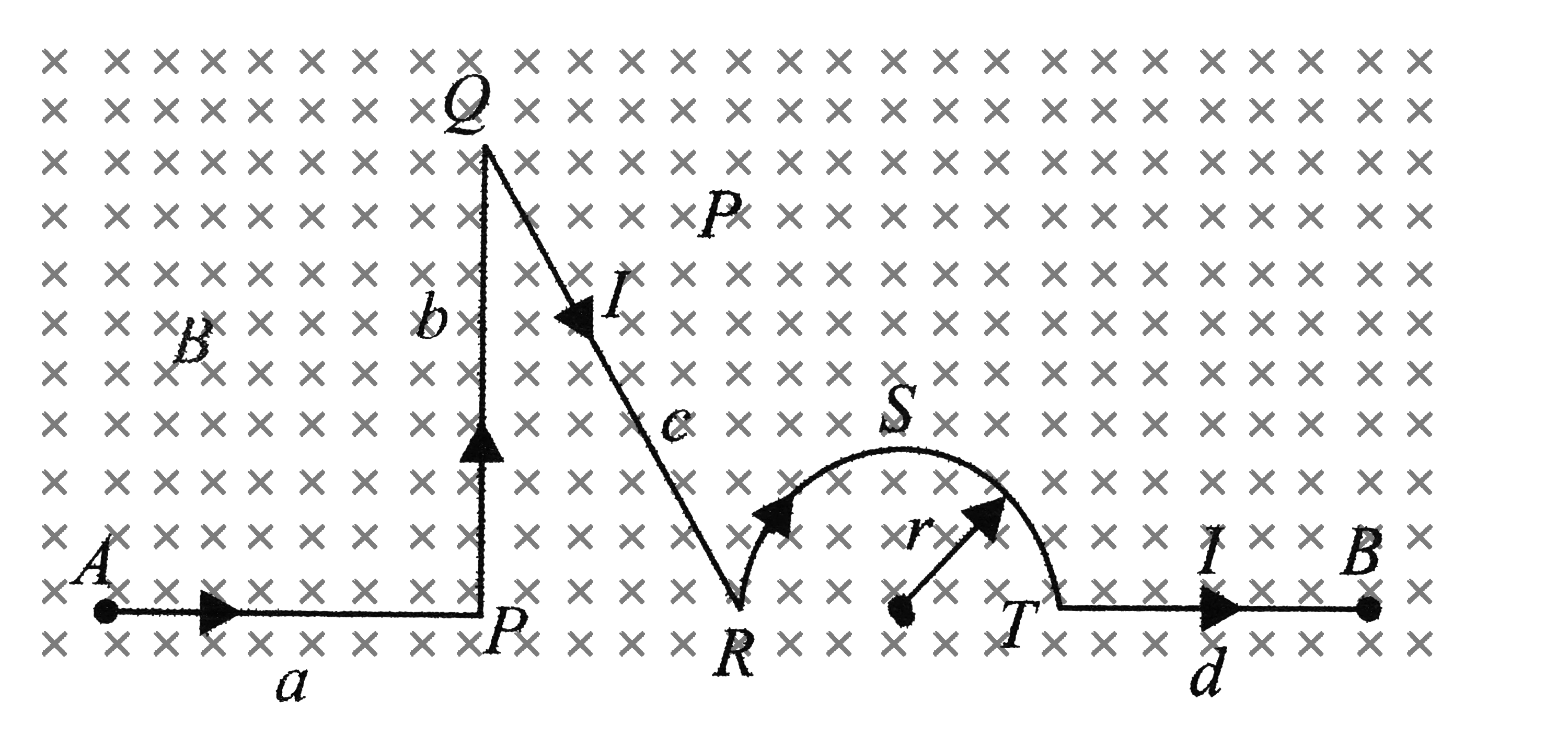
View SolutionA wire is bent in the form of an equilateral triangle PQR of side 10 cm and carries a current of 5.0 A. It is placed in a magnetic field B of magnitude 2.0 T directed perpendicularly to the plane of the loop. Find the forces on the three sides of the triangle.
View SolutionThe rigid conducting thin wire frame carries an electric current I and this frame is inside a uniform magnetic field →B as shown in Fig. 1.146. Then,
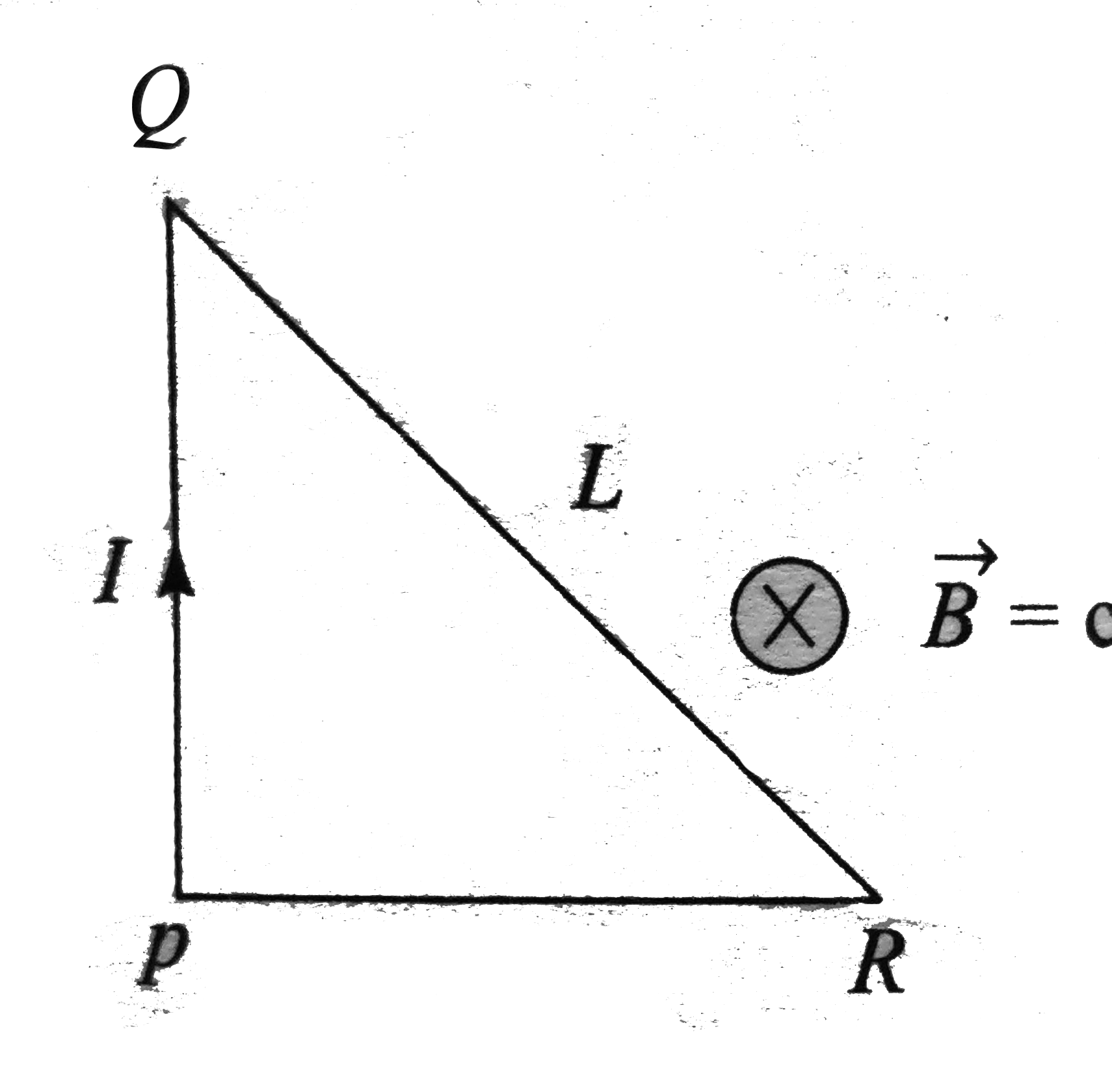
View SolutionThe bent wire shown in figure lies in a uniform magnetic field. Each straight section is 2.0 m long and makes an angle θ=60∘ with the x-axis , and the wire carries a current of 2.0A . What is the net magnetic force on the wire in unit -vector rotation if the magnetic field is given by (a) 4.0ˆkT and (b) 4.0ˆiT ?

View SolutionThe rectangular coil having 100 turns is placed in a uniform magnetic field of (0.05√2)ˆj tesla as shown in Fig. 1.84. Find the torque acting on the loop.
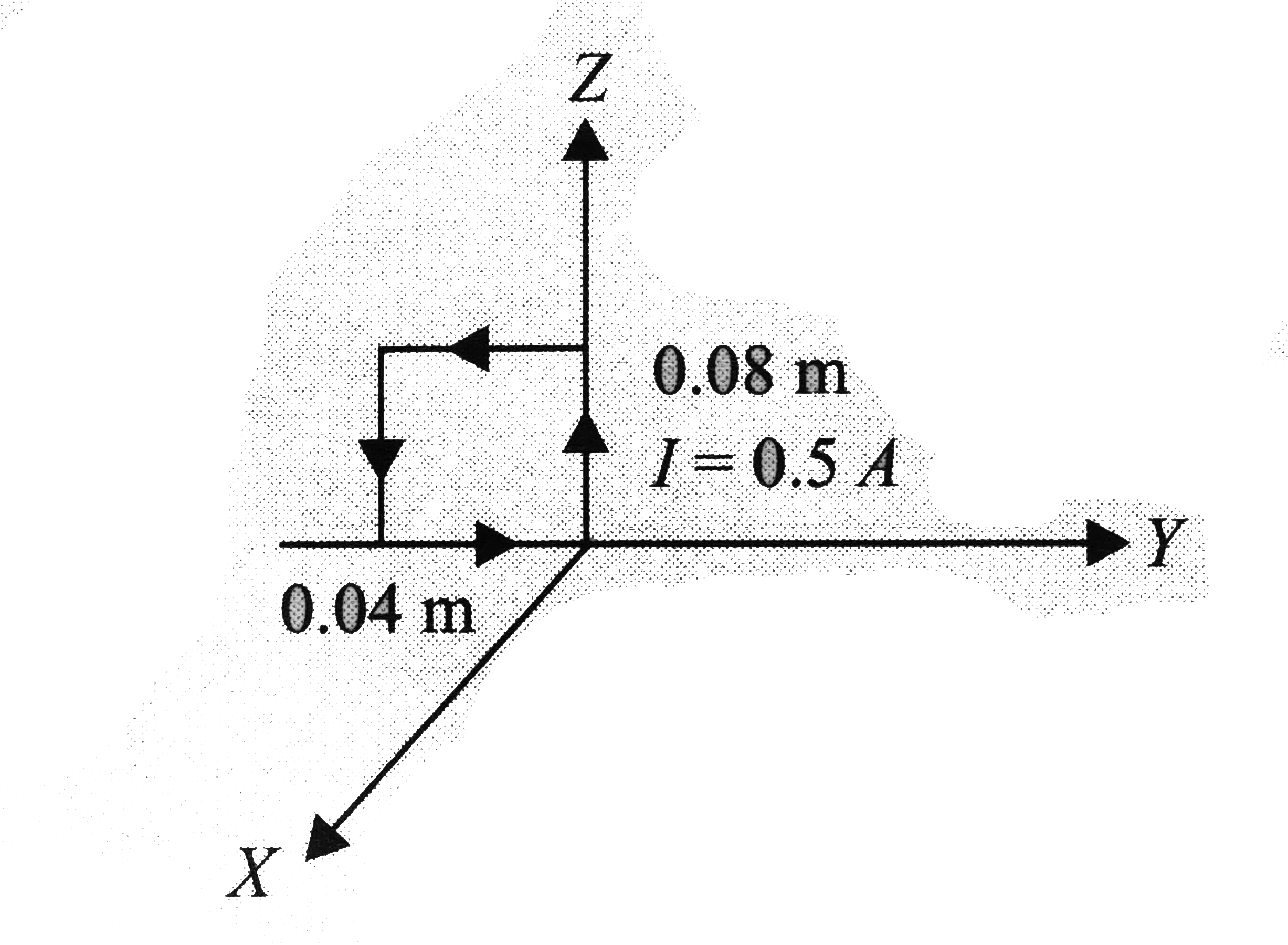
View Solution
